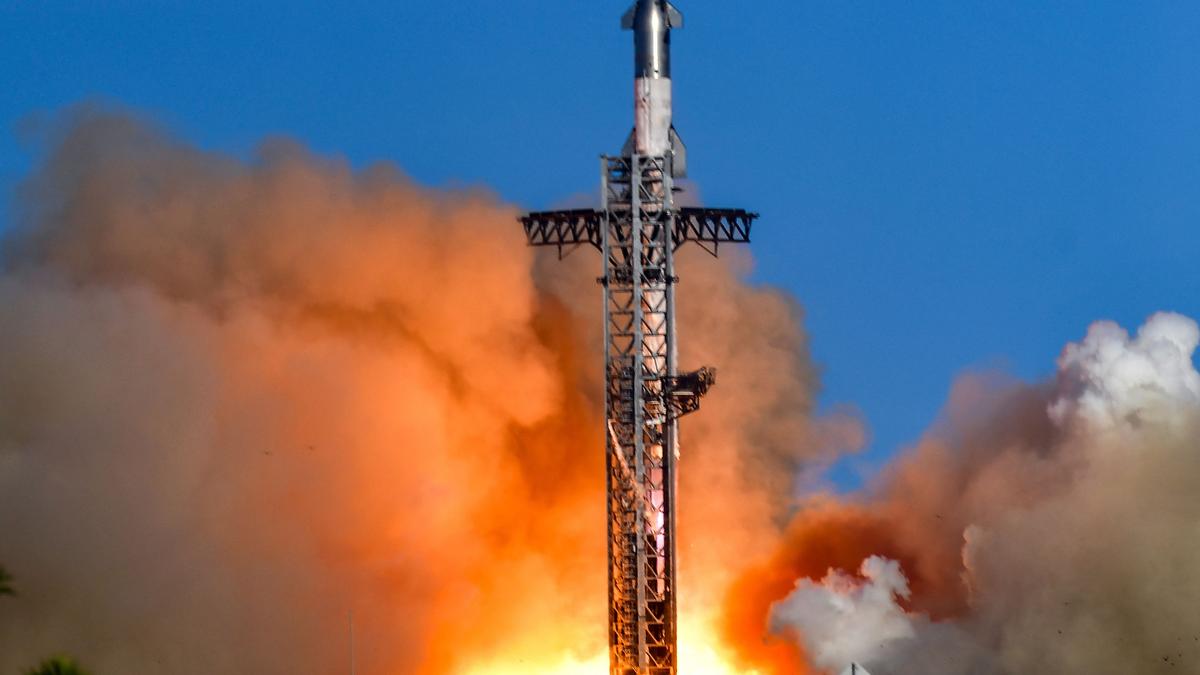
What is the status of the SpaceX Mars mission? | Explained
The Hindu
Elon Musk's ambitious Mars mission faces technical, logistical, and political challenges, raising doubts about its feasibility.
The story so far:
On March 15, Elon Musk, the CEO of SpaceX, announced on X that an uncrewed Mars landing mission will take place by the end of next year. The operation is expected to feature Optimus, a robot developed by Tesla — another company owned by Mr. Musk — as its passenger. “If those landings go well, then human landings may start as soon as 2029, although 2031 is more likely,” Mr. Musk stated on X. The billionaire entrepreneur appears determined to achieve this milestone using SpaceX’s reusable super heavy-lift launch vehicle, Starship.
The project has faced multiple setbacks in recent months, including two critical Starship test flight failures, or as Mr. Musk refers to them, “rapid unscheduled disassemblies”. Despite this, he has not postponed the planned date for SpaceX’s Mars mission. Originally announced in September 2024, the plan faces technical and logistical challenges, leading experts to question its feasibility.
One of the main concerns is whether SpaceX will be able to develop and produce a fleet of auxiliary tanker spacecraft in time and successfully refuel Starship in orbit. To reach Mars, Starship’s second stage must traverse approximately 5.5 crore kilometres in space. Timing is crucial, as every 26 months, Earth and Mars reach a “launch window” — a period when the two planets are closest, allowing for the most efficient space travel. If SpaceX fails to launch within this window, the mission could be delayed by more than two years.
Currently, Starship has only demonstrated its ability to reach Low Earth Orbit (LEO). Its fuel storage capacity of 4,200 tonnes of propellant is insufficient for a Mars journey. To address this, SpaceX announced in April 2024 that it would use LEO tanker spacecraft to refuel Starship mid-flight. However, this plan has yet to be demonstrated, and there is no clear evidence that development is underway. With only 20 months until the next launch window, it is doubtful whether anyone can design, construct, test, and deploy these tankers in time, said Daniel Dumbacher, former Deputy Associate Administrator of NASA’s Human Exploration and Operations Mission Directorate, during a U.S. Congressional hearing in February.
Beyond the issue of readiness, there is also uncertainty over whether SpaceX can manufacture and launch enough tanker spacecraft in a short time frame, given the complexity of in-orbit refuelling. This type of refuelling involves the transfer of super-cooled liquid oxygen and methane from a full tank to an empty one, operating under extreme pressure between machinery and the vacuum of space; a feat which has never been attempted before. SpaceX would need to launch and dock Starship’s multiple tankers in quick succession to offset fuel evaporation, adding another layer of difficulty to the mission.
SpaceX has repeatedly demonstrated its ability to accomplish seemingly impossible feats. The successful deployment of reusable Falcon 9 rocket boosters and the development of the Dragon capsule have proven its capacity to design spacecraft that can withstand the harsh conditions of space.





















 Run 3 Space | Play Space Running Game
Run 3 Space | Play Space Running Game Traffic Jam 3D | Online Racing Game
Traffic Jam 3D | Online Racing Game Duck Hunt | Play Old Classic Game
Duck Hunt | Play Old Classic Game











